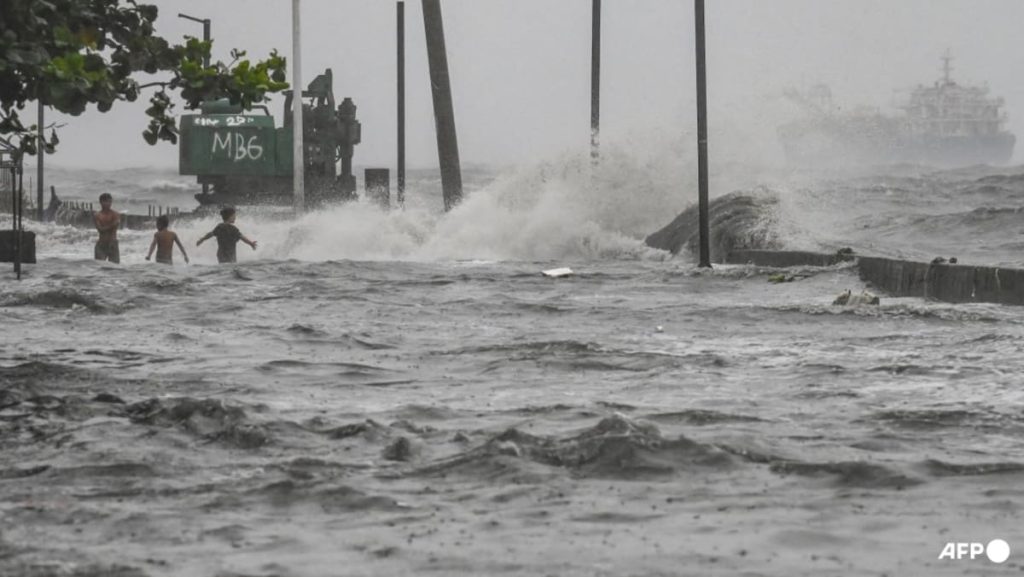Tropical Storm Yagi hit the Philippines for a second day, causing heavy rain that led to floods and landslides. The storm resulted in the deaths of at least 11 individuals, including a nine-month-old girl. In the eastern city of Naga, two people lost their lives, with one being the baby girl who drowned in rising floodwaters. Rescue efforts were carried out, with hundreds of residents being saved. Despite these efforts, the floods were reported to have reached head height in some areas, with more than 300 individuals seeking refuge in evacuation camps.
The damage caused by Tropical Storm Yagi extended beyond Naga, with two landslides in Cebu resulting in two fatalities and the destruction of five houses. In Antipolo, three individuals, one of whom was pregnant, perished in a landslide on Monday. Additionally, four drowning victims were discovered in various locations in the hilly community, following the overflow of creeks overnight. The storm’s impact on different areas of the country highlights the widespread devastation it caused, with both landslides and floods claiming lives and displacing residents.
The city of Naga, home to 210,000 residents, was particularly hard hit by Tropical Storm Yagi, with floodwaters slow to recede due to high tide. This posed challenges for rescue and relief efforts, forcing hundreds of individuals to seek safety in evacuation camps. Local officials worked tirelessly to assist those affected by the storm, including carrying out search and recovery operations to locate missing individuals. The resilience of the community was tested as they faced the aftermath of the storm, with infrastructure damage and loss of life requiring a collective effort to recover and rebuild.
The severe weather conditions brought about by Tropical Storm Yagi highlighted the vulnerability of various regions in the Philippines to natural disasters. Landslides and flooding remain significant risks during the typhoon season, necessitating pre-emptive measures and preparedness efforts to mitigate the impact on communities. The need for early warning systems, evacuation plans, and emergency response protocols was underscored by the storm’s destructive path, which resulted in loss of life and widespread damage. Strategies for disaster risk reduction and management are critical in safeguarding lives and livelihoods in the face of recurring weather-related hazards.
As recovery efforts got underway in the wake of Tropical Storm Yagi, communities affected by the disaster received support from local authorities, humanitarian organizations, and volunteers. Relief operations were mobilized to provide essential supplies, shelter, and medical assistance to those in need. The resilience and solidarity displayed by residents and responders in the face of adversity demonstrated the capacity of individuals to come together and rebuild in the aftermath of a crisis. The spirit of community resilience was evident as people worked hand in hand to overcome the challenges posed by the storm and its devastating consequences.
Looking ahead, the Philippines will continue to face the threat of tropical storms and extreme weather events, underscoring the importance of investing in disaster resilience and adaptation measures. Climate change is expected to exacerbate the frequency and intensity of such natural disasters, emphasizing the need for sustainable and climate-resilient development practices. By prioritizing disaster risk reduction, early warning systems, and community preparedness, the Philippines can enhance its ability to withstand future storms and protect the lives and livelihoods of its people. The lessons learned from Tropical Storm Yagi serve as a reminder of the urgent need to build more resilient communities and ensure the safety and well-being of all individuals in the face of evolving climate challenges.


